30 Headline Templates That Actually Convert (2025)
Discover proven templates that help you write headlines and boost conversions in 2025.
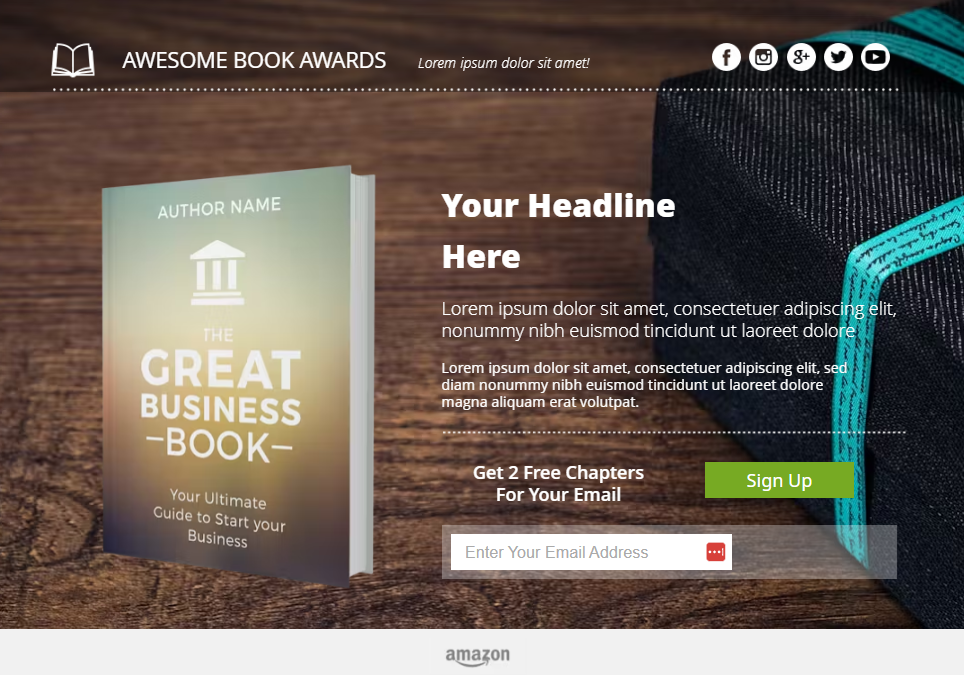
A good headline catches the eye, intrigues the reader, and makes them want to learn more. But writing them isn’t as easy as the greats such as Clayton Makepeace and Eugene Schwartz make it look.
Luckily, there are some tried and tested headline examples that you can swipe. Simply insert your own copy, and you’re good to go. These high-converting headline templates are used by sales pages and landing pages to glue their readers’ eyes to what comes next.
Key takeaways:
- Great headlines don’t just inform, but they sell curiosity.
- The best templates work because they tap into timeless human psychology.
- You can adapt these formulas for landing pages, ads, emails, or blog posts.
You’re one headline away from turning browsers into buyers—find out how.
How to use these templates
The headline templates you’ll find below are all MadLibs style, fill-in-the-blanks formulas for crafting a winning hook. They won’t do all the work for you – you’ll still have to fill in some vital information.
All you need to do before you start is gather these details of your product:
- Product name – what’s the name of your offer?
- Target market – who are you talking to in your headline?
- Results – what are the results of using your product or service?
- Benefits – what improvements can your customers expect when they use your product or service?
- Possible objections – why might they argue against buying your offer?
Once you’ve nailed these down, it’s time to have a look at the headline template and see which ones will best fit your offer.
Hint: for the best results, always split-test your pages! Headlines are an ideal component to split test because they can be swapped out with little to no impact on the copy that follows or the design of the page. Now, without further ado, let’s have a look at those headlines!
Direct-response classics
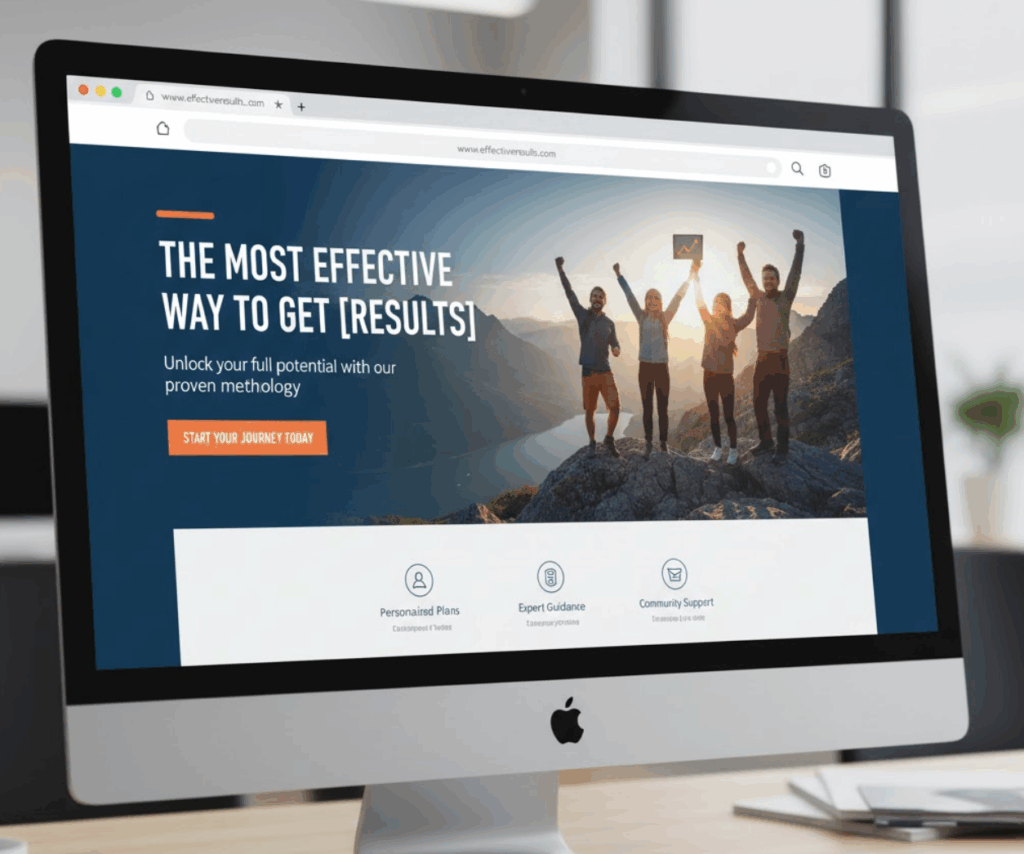
1. How I improved… [problem] without [objection] in just [time]
Now, this is a classic. In one fell swoop, you’re bringing the problem front and centre, while simultaneously squashing the most important objection they may have. Being specific about the time it will take will also reassure your audience: in many cases, the length of time it takes to get results isn’t as important as a guarantee that those results will happen. This kind of headline is great for almost any product or service that solves a problem.
Examples:
- How I improved my website’s conversion rate without hiring a developer in just 7 days
- How I fixed my back pain without expensive therapy in just 3 weeks
A/B test the timeframe (“in 7 days” vs. “in under a week”) or objection phrasing (“without ads” vs. “without paid marketing”).
2. Proven: The most effective way to get [results]
“Proven” is what we in marketing call a “power word”. These words trigger higher conversions by acting as shortcuts to powerful emotional responses: in this case, the need for reassurance. You can save the qualifications, testimonials, and results for later on in the landing page or sales letter – for now, just the word “proven” is enough to give a feeling of authenticity and trustworthiness.
This headline works for offers whose results are highly desirable, such as getting more clients, increasing profits, or losing weight.
Examples:
- Proven: The most effective way to lose your belly fat fast
- Proven: The most effective way to generate leads without cold calling
Test the power word (“Proven” vs. “Scientific” vs. “Data-backed”) or the specificity of the result.
3. Guaranteed [results] without [objection]
Another power word, “guaranteed,” sparks trust in the reader and keeps them reading until they find out what that guarantee actually entails. Unlike the above headline, this headline is great for offers that don’t have certain side effects, but which the audience might assume they do.
Examples:
- Guaranteed higher profits without selling your soul
- Guaranteed more clients without cold outreach
Test placement of “Guaranteed” (start vs. end) or try different objections to find which resonates most.
4. Get your hands on this system that took one [market] from [starting results] to [end results] in just [time]
Here’s a classic headline you’ll recognise from all over the web. It states the facts plain and clear: this is who it’s for, this is where they started, here’s where they got to, and here’s how long it took them – all by using your product or offer.
Examples:
- Get your hands on this system that took one freelancer from $500 to $5,000/month in just 60 days
- Get your hands on this strategy that took one startup from zero to 10K users in 6 weeks
Again, if you have specific and measurable results from several people, this is a headline that will use that proof to great effect. A/B test the timeframe (“in 60 days” vs. “in under two months”) or the specificity of transformation.
5. To people who want [results] but don’t know where to start
Calling out your audience like this is a powerful way of directly addressing the issue and speaking to them in a very straightforward way. You are communicating that you can solve their problem, as well as putting them at ease by hinting that you’ll be starting right at the beginning. This headline is best for offers that are tailored to newbies, beginners, and more inexperienced customers.
Examples:
- To people who want to learn coding but don’t know where to start
- To people who want to get fit but can’t stick to a routine
Test tone (“To people who…” vs. “For anyone who…”) or emotion (use “frustrated” or “tired of” for empathy).
6. How to [achieve desired result] even if [biggest objection]
This headline is ideal when your audience feels skeptical or believes success isn’t possible for them. It’s powerful for coaching, courses, or service-based offers because it immediately removes resistance. You’re telling them, “Yes, you can do this—even if you think you can’t.”
Examples:
- How to grow your business even if you’ve never marketed online before
- How to fall asleep faster, even if your mind won’t stop racing
A/B test the objection phrasing — try emotional vs. logical barriers (e.g., “even if you’re scared to start” vs. “even if you have no experience”) to see which drives more clicks.
7. What everybody ought to know about [topic]
Use this headline when you’re sharing educational, myth-busting, or insight-driven content. It’s great for thought leadership posts, product launches, and any topic where people may hold common misconceptions. It appeals to curiosity and the desire to feel “in the know.”
Examples:
- What everybody ought to know about healthy eating on a budget
- What everybody ought to know about email deliverability
A/B test “everybody” vs. “smart entrepreneurs,” “busy parents,” or “marketers” to target a niche audience. A/B test adding an emotion word (“shocking,” “essential,” “surprising”)
8. Do you make these mistakes when [doing activity]?
This headline shines when your offer helps people avoid errors, improve performance, or save time. It naturally triggers self-reflection, making readers think, “Wait, am I making these mistakes?” Great for a blog post, ads, or sales pages about optimization or improvement.
Examples:
- Do you make these mistakes when running Facebook ads?
- Do you make these mistakes when cooking for weight loss?
A/B test the number of mistakes mentioned — for example, “Do you make these 3 mistakes…” vs. “Do you make these 7 mistakes…” to find the curiosity sweet spot.
9. The secret of [achieving a desirable result]
This headline taps into curiosity and exclusivity. It’s ideal for audiences craving insight, access, or insider strategies. Use it for authority-building content, premium offers, or anything that positions your brand as holding “the missing piece.”
Examples:
- The secret of doubling your sales without Ads
- The secret of glowing skin at any age
A/B test the power word — replace “secret” with “truth,” “hidden formula,” or “method” to see which creates stronger intrigue and engagement.
10. Give me [short time] and I’ll give you [specific result]
This headline is perfect for time-limited transformations or quick wins. Use it when your offer delivers tangible results fast — such as short programs, challenges, or services that promise measurable improvements within days or weeks. It creates urgency, confidence, and immediate value.
Examples:
- Give me 7 days, and I’ll give you your first 1,000 followers
- Give me 30 minutes, and I’ll show you how to double your webinar conversions
A/B test the time frame — shorter durations (e.g., “24 hours” vs. “7 days”) can increase urgency, but slightly longer ones may boost credibility depending on the offer.
See why high-converting pages start with this kind of headline.
Social proof & credibility
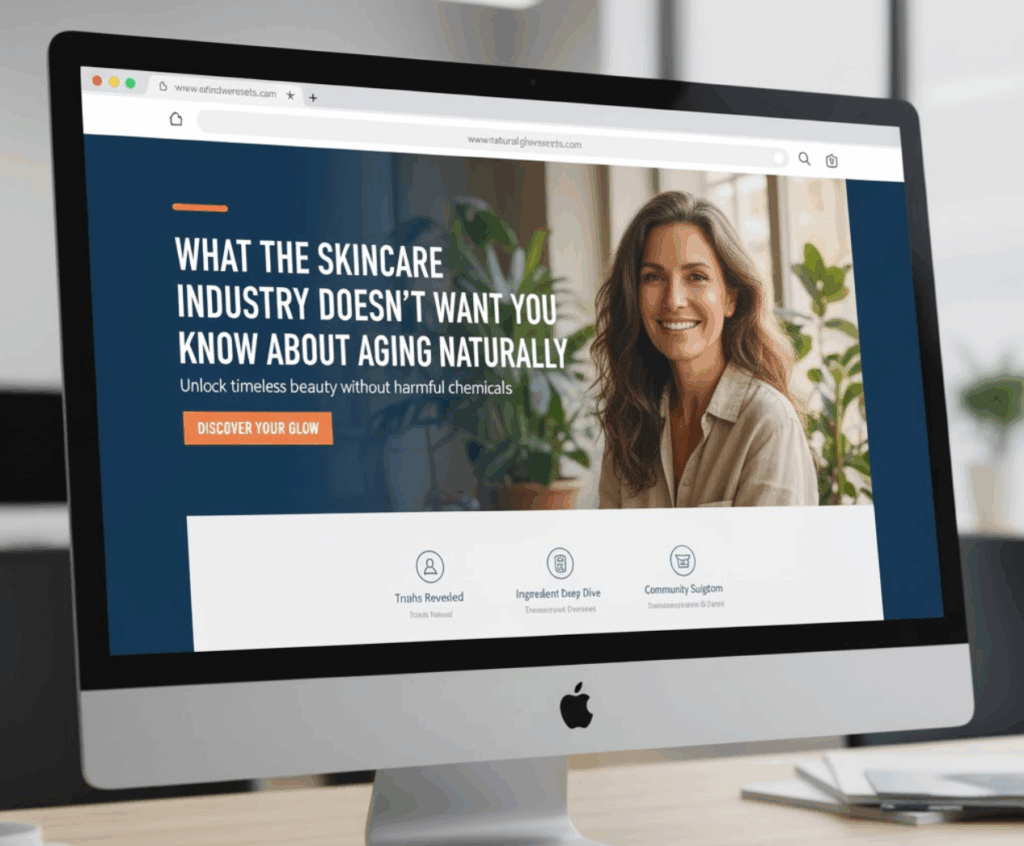
11. [A large number] of [target market] have now [results] – will you be the next?
In this headline, we play on the reader’s instinct to want to be part of the crowd. Social belonging is tied up with our identity, and when you make that identity aspirational, that’s a powerful cocktail of marketing magic. We all want to achieve results, but more than that, we want to belong to the crowd that has achieved and is now enjoying those results.
Examples:
- 10,000 small business owners have doubled their online sales with our ad strategy – will you be the next?
- Over 5,000 students have mastered coding in just 6 months with Software Academy – will you be the next?
Replace “transformed” → “completely upgraded” or “revitalized.” Add timeframe (“in 3 months”) or benefit detail (“doubled sales in 90 days”).
12. What [industry experts] do when faced with [problem]
This headline accomplishes multiple things in just a few words: it lets the audience know that industry experts face the same kind of problems they do, it hints at some secret knowledge they really ought to know, and it positions you as a source of authority because you have access to expert knowledge.
Examples:
- What top real estate agents do when faced with a slow market.
- What pro coders do when they hit a debugging wall.
If you have an example from a very well-known expert in your industry, such as Frank Kern for marketing, for example, you may be able to call them out by name as long as they’re recognisable enough for the audience.
Add “smart,” “savvy,” or “elite” before “experts.” Replace “problem” with a clear pain point (“low engagement,” “burnout,” etc.).
13. What the [industry] experts don’t want you to know about solving [problem]
Unlike the other “industry expert” headline above, this one relies on mistrust of industry experts. It reaffirms the audience’s suspicion that important information is being kept from them and that, as a result, their failure to achieve results isn’t their fault. It also suggests that, when they receive this information, they could also be considered experts. This headline would be best in a niche that is constantly evolving with new tips, tricks, and hacks, such as digital marketing or SEO.
Examples:
- What the digital marketing experts don’t want you to know about SEO ranking hacks.
- What the skincare industry doesn’t want you to know about aging naturally.
Replace “don’t want you to know” with “won’t tell you” or “keep secret.” Swap “problem” for a measurable outcome (“doubling your leads,” “building muscle fast”). Test curiosity vs controversy (e.g., “What they won’t tell you” vs. “What they’ve been hiding”).
14. [Number] of [target audience] can’t be wrong – here’s why they chose [solution/product]
Use this headline when you want to highlight popularity and social proof. It’s ideal for audiences who are skeptical and want reassurance that others like them have succeeded with your offer.
Examples:
- “12,537 entrepreneurs can’t be wrong – here’s why they chose GrowthMaster Pro”
- “8,204 busy moms switched to vitamins – here’s why it works”
A/B test the number, the audience descriptor, or the power word (“can’t be wrong,” “switched,” “upgraded”)
15. See why [credible source/brand] trusts [product/service] to [achieve result]
Works best when you can leverage recognizable brands, influencers, or industry authorities to lend credibility. Ideal for products or services in competitive niches where authority matters.
Examples:
- “See why Forbes trusts ZenPlanner to boost productivity”
- “See why top gyms rely on PowerPulse Supplements to maximize performance”
A/B test credible source (brand vs influencer), result phrasing, or the trust verb (“trusts,” “relies on,” “recommends”)
16. [Number] of [people like your audience] have already [achieved result] – and here’s what they did differently
Best for case-study style social proof. Highlights results from a relatable audience while teasing actionable insights. Ideal for email campaigns, blogs, or landing pages.
Examples:
- “1,742 remote workers have already doubled their productivity – and here’s what they did differently”
- “3,010 readers have finally conquered procrastination – and here’s how they did it”
A/B test the number, the audience descriptor, or the phrasing of the “secret”
Try this headline on a Convertri template.
Problem-agitate-solve
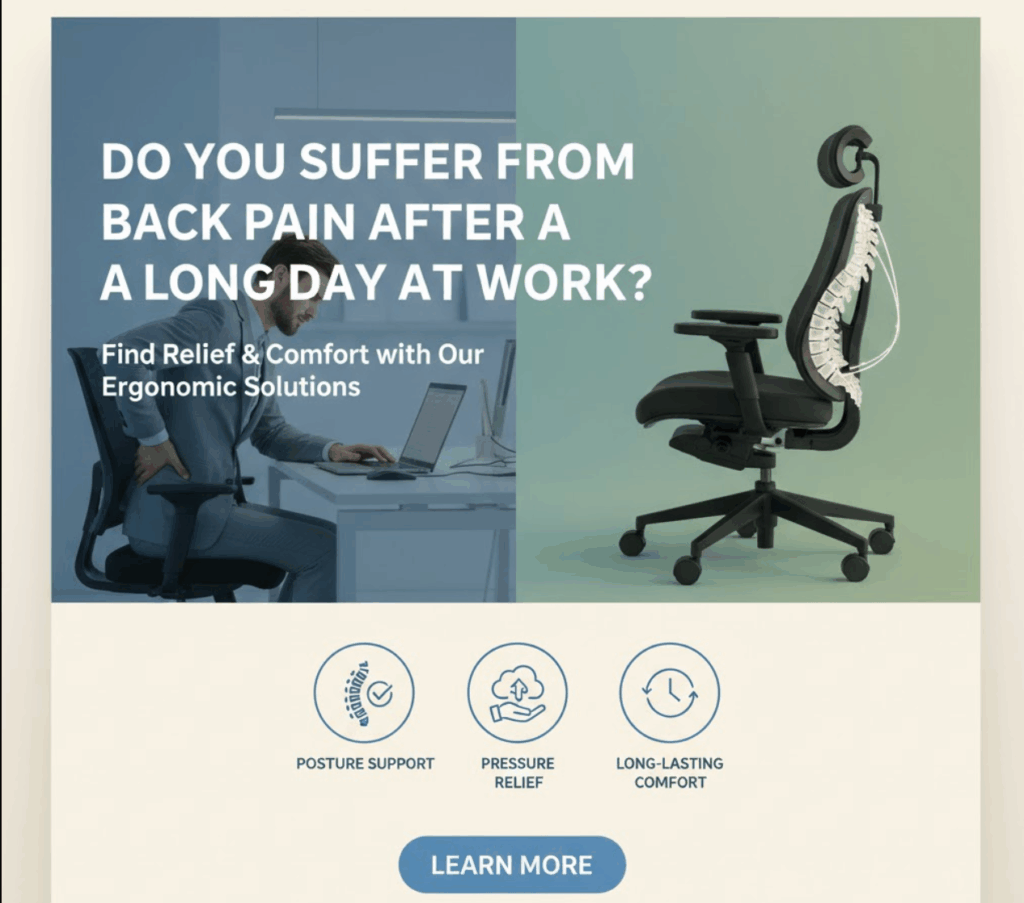
17. Do you suffer from [problem] at [occasion]?
A simple yes or no question qualifies the audience and gets them subconsciously on board as soon as possible. “Suffer” is a strong word that may exaggerate the pain that they’re feeling, but which will go a long way to putting it at the front of their minds – making the problem more immediate will make them want to solve it faster. This kind of headline is perfect for medical issues such as bad backs or sciatica, all the way to issues with techniques such as golf swings or social anxiety.
Examples:
- Do you suffer from back pain after a long day at work?
- Do you suffer from anxiety before important meetings?
Change the emotion word or specific occasion — e.g., “suffer” vs. “struggle,” or “after a long day at work” vs. “every Monday morning.”
18. Does your [problem] ever embarrass you?
This is a very emotion-driven headline that plays on the discomfort the audience feels with their problem. As such, it works best for offers which help with shameful, embarrassing, or otherwise distasteful problems such as bad skin, body odour, or addiction.
Examples:
- Does your acne ever embarrass you in public?
- Does your bad breath ever embarrass you on dates?
Test intensity or emotional trigger — e.g., “embarrass” vs. “frustrate,” or “in public” vs. “around your boss.”
19. This one tiny mistake costs a [target market] [cost] a year
For example, “costs a single mother £423 a year”. By calling out the same kind of individuals you’re targeting, and putting a definite figure on their losses, you highlight the pain of the loss and generate fear that whoever’s reading may experience the same results if they don’t read on.
Examples:
- This one tiny mistake costs freelancers $2,300 a year.
- This one tiny mistake costs small businesses 10 new clients a month.
Vary the number (specificity) or audience type — e.g., “freelancers” vs. “consultants,” “$2,300” vs. “thousands.”
20. You can laugh about [problem] if you follow this simple plan
Your audience’s greatest desire should not be to have the problem your product or service solves. They should want to get to a point where they’re so far past the problem that they can laugh about it instead of it being a painful memory. This headline is not for offers with a weak desire point – i.e., where you’re selling something the audience doesn’t really, really need. This is for those painful problems that affect them every moment, such as medical issues or financial difficulties.
Examples:
- You can laugh about your debt if you follow this simple plan
- You can laugh about your failed diets if you follow this simple plan
Swap tone or headline promises strength — e.g., “laugh about” vs. “finally overcome,” or “simple plan” vs. “3-step method.”
21. Why it’s not your fault you have [problem]. And how to make it disappear in just [time]
No one wants to admit they’ve been stupid or made a mistake. And if your offer includes new information that will absolve the reader of the responsibility, they’ll want to hear about it – which is why you put it first thing in the headline. You’ll make them feel good by taking away the pain, and then hint at how they can fix the issue in a shorter space of time than they’ve been worrying about it. This headline is good for whenever you’ve discovered a little-known obstacle to getting results, and are coaching people in how to get around it.
Examples:
- Why is it not your fault that you can’t lose weight? And how to change that in just 30 days
- Why is it not your fault that your business isn’t growing? And how to fix it in 6 weeks
Experiment with time promise or problem phrasing — e.g., “in just 10 minutes” vs. “in under a week,” or “burned out” vs. “exhausted.”
22. What if your [problem] is actually getting worse every time you [common action]?
This headline introduces doubt and urgency by suggesting that the reader’s usual way of handling the issue might be making it worse. It pushes them to question their current habits and primes them for your solution. This works well for health, productivity, or performance-related offers — anywhere your audience might think they’re “doing everything right” but are unknowingly sabotaging their results.
Examples:
- What if your back pain is actually getting worse every time you stretch?
- What if your marketing strategy is actually losing you leads every time you post?
Test urgency or shock factor — e.g., “actually getting worse” vs. “quietly sabotaging your results,” or “every time you stretch” vs. “each morning.”
Grab our headline templates before your next ad launch (your CTR will thank you).
Curiosity & contrast
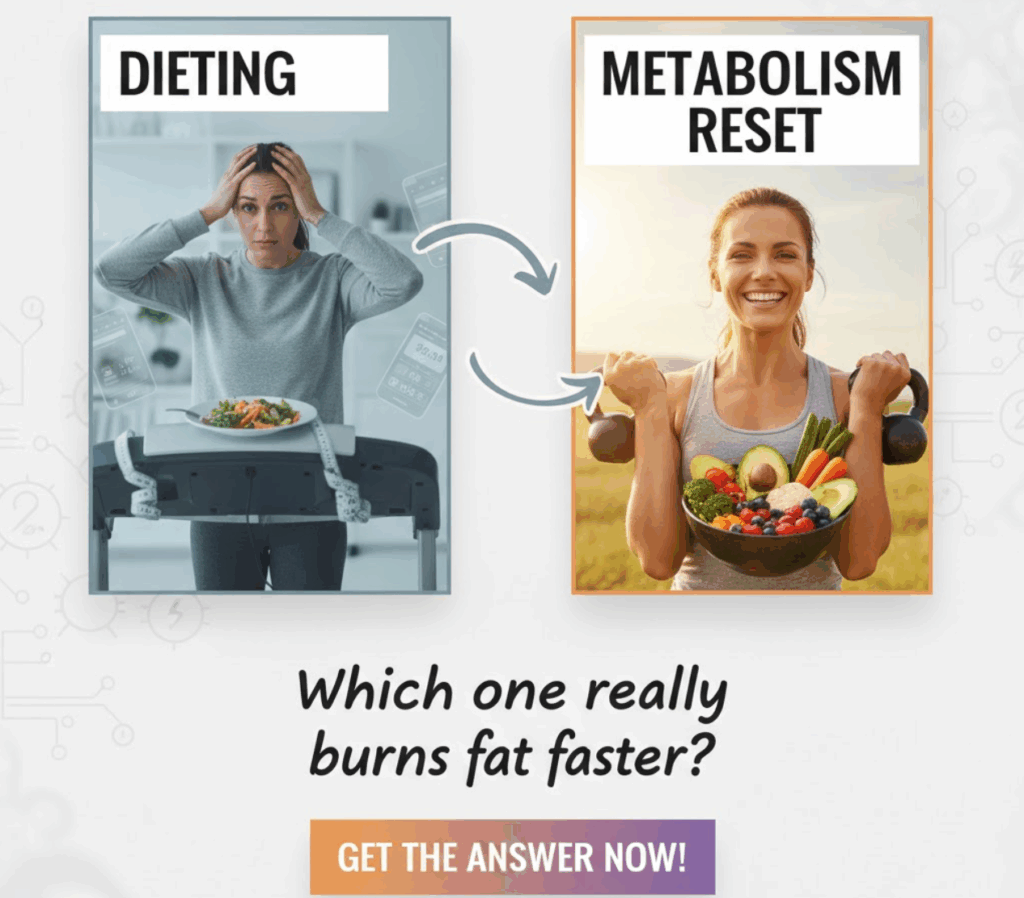
23. The secret of getting [results]
This is a curiosity-based headline that hints that there is some crucial information the audience is missing. It’s great for offers that promote a kind of method to achieve very specific and measurable results, such as weight loss or dating.
Examples:
- The secret of getting clients to say “yes” without lowering your prices
- The secret to getting glowing skin without expensive treatments
A/B test the power word (“secret” vs. “hidden formula”), or make the result more specific (“10x website traffic” vs. “more visitors”).
24. How a [something perceived as bad] resulted in [results] and [benefits]
This interesting headline plays on the reader’s expectations: no one expects to read something bad immediately after clicking on a sales pitch. That’s why this headline works for offers with clear and common objections, or whose processes might be uncomfortable at first.
Examples:
- How a failed startup became the foundation of my 7-figure business
- How a messy breakup led me to create a global wellness brand
Other headline example: if your weight loss plan includes cold showers, it’s easy for someone to go “oh no, cold showers, ew” and switch off. But if you immediately connect the discomfort with desirable results, the audience will want it more.
A/B test the contrast level (how shocking or “bad” the starting point is) or emotional tone (tragic vs. humorous storytelling).
25. If a [disaster] happened to your [business/life/relationship, etc]: would you survive?
This headline is meant for offers that give the customer some kind of security against bad times. Think life insurance and retirement plans, all the way to survival bunkers, weapons, and video doorbells. It forces the reader to think about an uncomfortable scenario and evaluate their chances of getting through it without the product or service you’re offering.
Examples:
- If a cyberattack hit your business tomorrow, would you survive?
- If a recession hit your savings, would you still retire comfortably?
A/B test the intensity of the disaster (“cyberattack” vs. “data breach”) or scope of the consequence (“tomorrow” vs. “this year”).
26. The surprisingly simple way to [achieve big results] without [difficult effort]
Perfect for offers that make a complex or intimidating goal seem easy and achievable — great for fitness, business coaching, and personal development.
Examples:
- The surprisingly simple way to double your sales without spending a cent on ads
- The surprisingly simple way to lose weight without giving up your favorite foods
A/B test the adjective (“simple” vs. “unusual” or “little-known”) to see what increases click-through.
27. [Common belief] vs. [unexpected truth]: Which one really gets [result]?
Works best when your offer challenges conventional wisdom or exposes industry myths. Ideal for consultants, educators, and innovative brands.
Examples:
- Hustle vs. Strategy: Which one really gets you financial freedom?
- Dieting vs. Metabolism Reset: Which one really burns fat faster?
A/B test specificity — use either broad contrasts (“hard work vs. luck”) or niche ones (“paid ads vs. organic traffic”) to target audience interest.
Try this curiosity and contrast headline on a Convertri template.
Offer & urgency
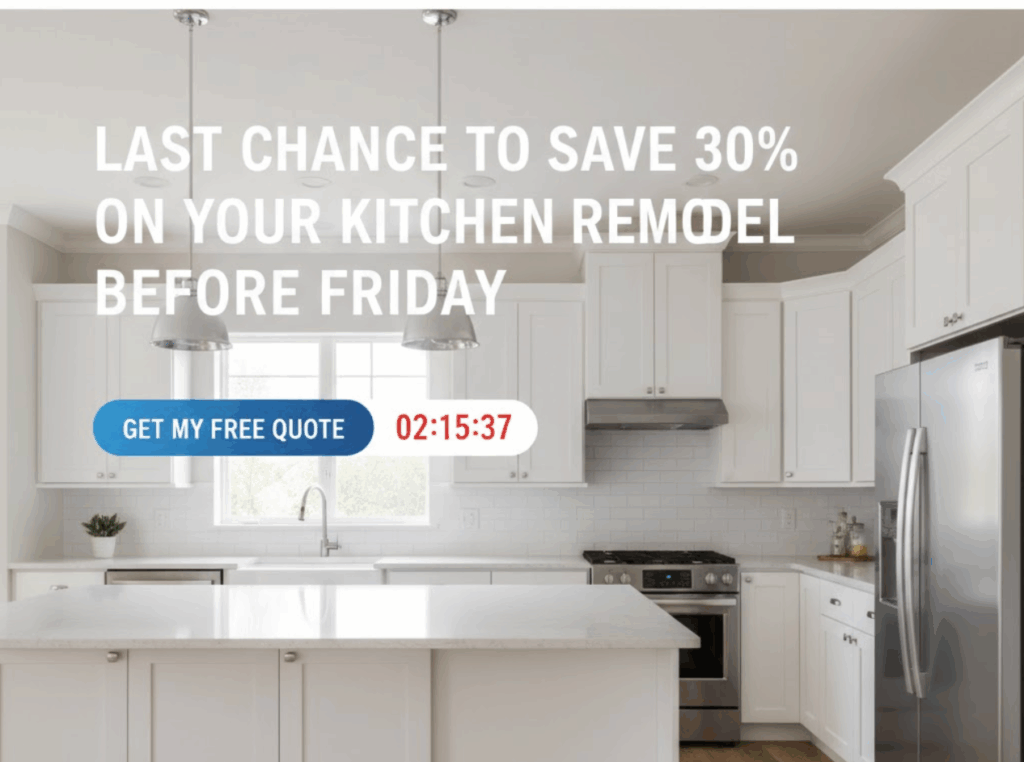
28. Last chance to [achieve desired result] before [timeframe ends]
Use this headline near the end of a promotion to trigger urgency and prompt immediate action. It works best for flash sales, seasonal campaigns, or time-limited signups. The sense of finality pushes readers who are still deciding to take action now.
Examples:
- Last chance to boost your coaching business before midnight tonight
- Last chance to save 30% on your kitchen remodel before Friday
A/B test time specificity (“Before Midnight” vs. “Before Friday”) or urgency words (“Last Chance” vs. “Final Day”).
29. Get [bonus/extra value] when you [take action] before [deadline]
Use this when you’re adding a limited-time bonus or reward to your main offer. It’s ideal for launches, enrollments, and flash sales where early action earns extra value. This approach makes acting fast feel smart and rewarding.
Examples:
- Get Lifetime Access + Bonus Module when you sign up before October 12th
- Get a free certification prep guide when you register for the course by Friday
A/B test bonus framing (“Free Consultation” vs. “$200 Value Bonus”) or deadline format (“Before Midnight” vs. “Ends in 48 Hours”).
30. Only [number] spots left for [offer/event]. Reserve yours now.
Use this when availability is genuinely limited to highlight scarcity and exclusivity. It’s great for small-group programs, live events, or coaching cohorts. This headline drives urgency by making readers feel they might miss out on something valuable.
Examples:
- Only 5 Spots Left for Our Fall Team Coaching Certification. Reserve Yours Now.
- Only 3 Appointments Left This Week for Free Roof Inspections.
A/B test scarcity detail (“Only 5 Spots” vs. “Almost Full”) or call-to-action (“Reserve Yours Now” vs. “Claim Your Spot Today”).
Turn boring headlines into click magnets in minutes—get the templates now.
FAQs about landing page headlines
What makes a great landing page headline?
A great landing page headline is clear, specific, and focused on benefits. It should instantly show visitors what they’ll gain and why they should care. When using a landing page template in Convertri or any builder, focus on creating attention-grabbing headlines that guide the user toward action. Strong headline writing is the key to increasing conversions.
Should I include keywords in my landing page headline?
Yes, but naturally. Keywords help improve SEO and relevance, but your primary goal is to convert visitors. Always write compelling headlines for humans first, then refine for search intent. The best headline templates often blend clarity with subtle keyword use to attract both search engines and readers.
How can I test if my headline works?
Use A/B testing tools—like those built into Convertri—to compare different versions of your headline. Change one element at a time, such as tone, power words, or the promised benefit. Track key metrics like click-through rate (CTR), bounce rate, and conversions to determine which headline formulas deliver the best performance.
What’s the biggest mistake people make with headlines?
Trying to sound clever instead of clear. Visitors should be able to understand your offer in one second or less. Confusion kills conversions, especially on landing pages where attention is limited. The best headline formulas emphasize clarity, emotion, and direct benefits over wordplay.
Should I use emotional triggers in my headline?
Absolutely. Emotion drives decisions. Use words that spark curiosity, urgency, or aspiration—just ensure they align with both your audience and brand tone.
Final words
There are countless headline templates and formulas available, but these proven methods can help you craft compelling headlines that increase conversions on your Convertri landing pages. Test, refine, and repeat—because even small changes in your headline writing can dramatically improve your results.
Split test every variation, even if you’re sure there’ll be a clear winner. The results may surprise you!
Want more clicks and signups? Get the exact landing page headline templates experts swear by.





